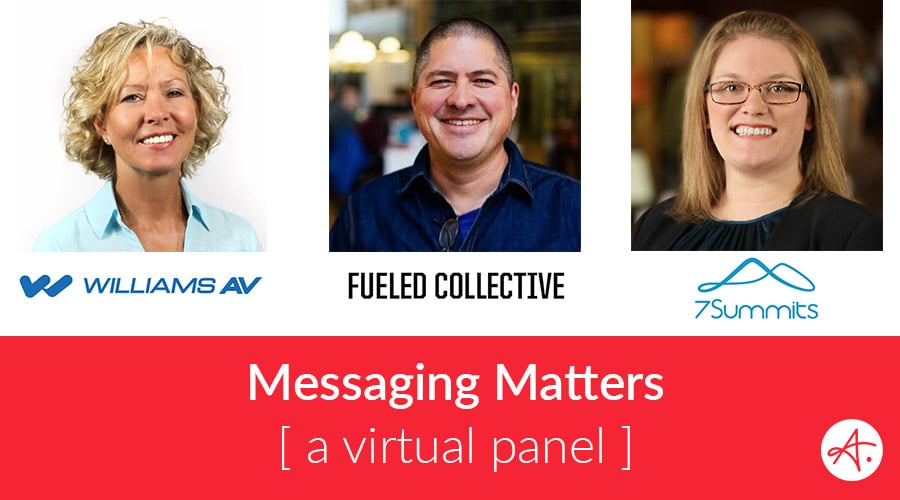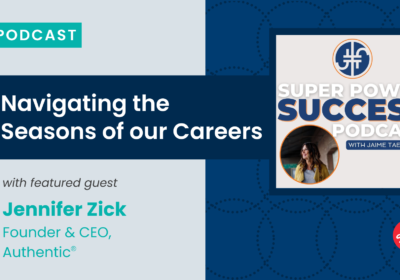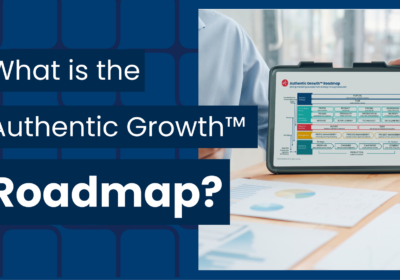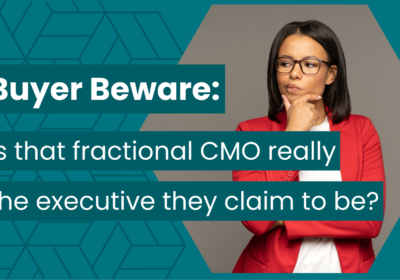
There are any number of reasons that a company may revisit its brand and messaging approach, including: Changes to the business strategy, market focus, product or services mix, buyer demographics, leadership, and merger / acquisition activity. Whatever the motivation, the process of reshaping the brand narrative and supporting messaging can be a hefty undertaking. Done well, a messaging refresh can align internal stakeholders, revitalize a company’s culture and open new inroads for growth. Miss the messaging mark, and employees and customers can end up confused or totally disengaged. Messaging matters.
Welcome to this edition of Authentic’s “virtual panel” series: a Q&A exchange with three business leaders who are helping shape the future of their brand story with a customer-centric message.
We’re extra-excited to introduce you to this group of panelists, who are not only savvy business and brand leaders, but who are also Authentic clients, actively engaged with our team to help them lead brand and message transformation in their growing businesses.
Here’s a quick virtual introduction to our panel of experts (subsequently referred to by first name in the conversation that follows):
Q1: There are a number of reasons that a business might refresh or reposition their brand story. What was the impetus in your organization that led you to your recent messaging initiative?
(DON) We had several factors come together at once that caused us to consider a need for repositioning: we had just launched a new franchise business that required us to rebrand to Fueled Collective. And then we were flooded by a huge amount of competition from both large and small players. We were in a unqiue position of needing to explain why we had rebranded, why we had launched a national franchise – yet how we were still the local guys, at least in our original market. All that was a lot to convey with any clarity, let alone convincingly.
(BETHANY) 7Summits was at an inflection point in our business, due to an amazing growth trajectory over the past several years, and the refinement of our services offering over that time. This inflection point provided the opportunity to reassess who we wanted to be as we continue to grow: Would we evolve away from the brand voice we had honed as a small and agile business? Or would we double-down on our commitment to that original voice, while refining the message to support our new focus? It was important that our messaging create alignment and support both for our long-term vision, as well as our active go-to-market strategy, while accurately reflecting the company that we are, and hope to be.
Ultimately, the messaging process helped us recommit to our authentic, original brand voice (who we are), and refine the way we package our story so that it better aligns with the way we serve our clients today (what we do). Going through the messaging process – especially at such a key inflection point in our growth – was a really important piece of creating clarity and alignment for our stakeholders.
(DIANE) For 40+ years, Williams Sound has been an industry leader providing assistive listening devices for ADA compliance. Recently we acquired Pointmaker, an industry leader in video annotation. With the combination of the two companies, we grew our market potential 10-fold by entering into the Audio Visual space. We went from a $4.5 billion assistive listening market opportunity to $231 billion in AV.
With that type of market growth, we needed to project ourselves with a broader and bolder message to cut through the market noise and clutter. We just launched our first two jointly developed products that combine the engineering expertise of both organizations. These are first-of-their-kind products that represent a new generation of wireless audio video tools designed to simplify presentation creation and engagement via Bluetooth mobile devices in the meeting space. This new generation of product is far reaching with huge potential in the market applications for corporations, education, houses of worship and courtrooms.
In our own niche markets, our names and reputations are well known and understood. Now, we are competing in a vast industry with virtually no brand recognition. To survive and be successful, we need to differentiate ourselves from the crowd. We need to be bold, approachable and frankly, become the meaningful solution to every meeting’s issue – connecting people, devices and input sources effortlessly. “Williams Sound” and “Pointmaker” no longer identifies the collective products and services we now provide to a wider audience. Internally and externally, we needed to provide messaging and a brand narrative that spoke to our larger offering.
Q2: We often hear from business leaders that it is difficult for their internal teams to articulate their unique story. In fact, the word “myopic” is often used to describe the feeling of being so close to the subject matter that it’s hard to see the big picture. How are you combating near-sighted messaging in your organization?
(BETHANY) We’re doing more listening than talking. We’re listening to our clients, to our channel partners, to other relationships in the ecosystem, and even to our competitors. We are working to really hear what the market thinks / feels / believes, so we can speak their language as we communicate and interact with them.
We’ve learned that we need to be careful not to let our own baggage get in the way of how we message. For example, not long ago, there was debate in our business about whether we should move away from using the term “Communities” as we talked about our services and expertise. As a Salesforce partner, we have a long track record of building community-centric solutions on the Salesforce platform. But we were concerned about getting too boxed in and niched around only the “Community Cloud” product, which represents just a fraction of the work we do for our clients. We considered throwing the word “Communities” to the curb in our own messaging.
When I joined the business, we took a fresh look at this debate: this time, from an outside-in perspective. The “Communities” term would need added context as we communicated with our channel partners, but it was the exact term that our buyers used to describe their needs. Community-centered solutions are what our clients want to buy. If we don’t use their terminology, and demonstrate our expertise, we lose out. So we’re not only bringing “Communities” back, but we’re giving it an expanded definition so we can really connect the dots with all of our audiences: channel and client.
(DON) Yes, it’s a familiar problem. I think we just get so used to touting our features and benefits that we fail to notice when the message is no longer relevant. In our case, the market changed right under our noses. What was important in our early years was no longer a big deal. And what people wanted had changed drastically. The remedy for us has been to spend a lot more time talking to our members and prospects, in person and through surveys and feedback requests.
(DIANE) For six months we struggled internally to define our brand narrative. Myopic is an excellent description of our situation. We have very talented team members but we couldn’t get out of our own way – we were too narrowly focused and hitched to our pasts, concentrating on what we’ve been and not where we need to go as a new, combined company. New leadership gave us the opportunity to think beyond our current selves but we also needed an outside, unbiased perspective to help explore all faucets of the new Williams AV. I sought out Authentic specifically to give us that perspective and guidance. After my initial meeting with Jennifer, I knew she and her team could help me be an advocate for change. Timing, as they say, is everything. The leadership change and onboarding of Authentic couldn’t have happened at a more opportune time – 24 hours to be exact. The senior team was eager to quickly move our company forward, shedding its old branding narrative and driving a new and bolder one.
The discussions and exercises Authentic used to develop the brand narrative helped nurture, nudge and pace the change. Old mindsets were challenged in a non-threatening way while at the same time, the urge to quickly abandon the past was tempered to preserve the brand equity built over 40 years of growth.
Q3: We live in such a fast-paced, media-driven and content-saturated world. How do these realities shape the way you think about messaging for your business?
(DIANE) As a whole, Williams Sound had been comfortable with its mild, mid-western approach to business. We now need to push our own perceptions and boundaries and be ‘comfortable being uncomfortable’. This is a big shift culturally and one Authentic is helping us navigate. It is a work-in-progress but one that is necessary if we are going to grow to our full potential. The pace of which we are currently experiencing in the fast-paced, media-driven and content-saturated world forces us to be much more agile, with a willingness to pivot, take risks, stand out and create messages that cut through the clutter. We have a nano-second to make a connection. It used to be brick and mortar businesses needed to create an experience/impression at the pace of which a person walked or drove by the storefront. Now, multiply that by 100 – across multiple channels: websites, emails, social media, advertising, etc. As we work through perfecting and developing our brand narrative, consistent messaging that is meaningful and relevant across all touch points is imperative. We are currently revamping our identity, website, sales voice and value propositions to all match-up.
(DON) The fact is, nobody’s waiting around to see any marketing from us. They simply don’t care and don’t have the attention span to ingest our marketing messages, so the messages we share can’t be self-serving. They have to provide value, solve problems, and create meaningful connections for our audiences, or they simply don’t matter.
(BETHANY) From my perspective, I feel like these realities lead to a bifurcated strategy. On one hand, we really need to plant our flag firmly on the ground of who we are, who we want to be, and how we’re going to show up to the world. That is our core message, and with that flag planted, it really shouldn’t sway too greatly. However, the pace of communication and innovation also requires our brand to be agile, with space to message “in the moment”, bringing new conversations to market that complement the core, but don’t detract from it or compete with it.
I’ve seen way too many companies trying to be all things, to all people, at all times. Their core message isn’t grounded, and it moves based on what feels right at the time, or to catch up to competitors, or to take advantage of an industry shift. We don’t want to do this.
It’s so important to really understand who we are as a brand, what is true about us, so that this messaging core is always the most important, the most protected, and gets the most energy. From there, with proper guardrails in place, our brand can – and should – be responsive and able to message in the moment.
Q4: Where do you see messaging being most vital to your business growth strategy? What channels and audiences are most important to you today, and what are you seeing on the roadmap in the next 12-24 months?
(DIANE) With our newly developed brand narrative, everything we do from a marketing and message perspective will be measured by how closely it reflects the narrative. Our brand narrative is the mirror of which we ask ourselves’ “does this [ad, social media post, content] accurately reflect the brand narrative’s intent?” If it does, it is stamped “approved”. If not, it is reworked until it does. This approach helps us stay true to the original intent as well as consistent across all channels, keeping us laser focused on the end-game. For the next 12-24 months, our focus will be further developing the brand narrative, customer personas, brand identity and communicating the changes internally and externally. Channel-wise, we will concentrate on re-platforming and consolidating our websites, repositioning our sales materials and developing content for social media, advertising and tradeshows.
(DON) We need to tell our story by telling our members’ stories. So, that means documenting the ambitions, experiences and successes of our members. This will probably take place largely on our blog, with social sharing to drive traffic to the blog. Over time, we may be adding a more visual medium, like Instagram, as we will be adding a social club component to our business (social events, parties, cocktails) -– all of which is very visual and textured.
(BETHANY) We’ve just finished the process of re-articulating our core message, and are spending the next several months making sure that flag is firmly planted and has the support of our people and systems, so we are delivering a consistent 7Summits experience to everyone who interacts with our brand. Once our core messaging muscles are strong, we’re excited to branch out with more flexibility to message in the moment, play with new ideas, and test various channels in the market.
Q5: A lot of organizations struggle with keeping messaging consistent between marketing and sales. What strategies have you seen be effective in creating and maintaining messaging alignment across the organization?
(DIANE) We keep Marketing and Sales aligned a couple of ways: daily stand-up meetings between department heads to keep each informed of current topics and tactics, weekly meetings with larger department groups to discuss strategies and long-term initiatives and lots of open dialogue in between to ensure Marketing delivers what Sales needs. It certainly helps if the two groups like and respect each other and Williams AV has a great group of talented members on both sides. We genuinely like each other and every day we laugh with and at each other. There is universal respect, which allows for open and honest conversations. We all have the same goal in mind: to make Williams AV successful. But if Marketing is developing messaging and material that are not meaningful to our audiences – both internally and externally – then even the best marketing work will be wasted. I rely on the Sales team to share their insights with me so we understand our customers’ challenges and needs and how we can communicate Williams AV provides the solutions. Sales knows our customers best – they talk to them, help resolve issues and discover new opportunities every day. Why wouldn’t Marketing take advantage of such a wealth of information that exists within our own walls? They are my marketing research team.
(BETHANY) Sales and marketing alignment may sound like a boring topic to some people, but it’s one that I’m absolutely passionate about! I use the phrase “go-to-market” with great intentionality. For me, it’s all about alignment at the top between sales and marketing leaders: setting expectations together and driving consistency that helps both sides activate. Once that leadership alignment is in place, agreement can be made on what the core message is. From that shared firm foundation, it’s easy to see when someone is off-message, or when a new message is being introduced that is not in alignment. On the other hand, if you haven’t established a strong message core, it’s easy for others to create a case for why something else could work. But with a strong messaging core in place, it’s easy to say: No, this isn’t a fit. And it’s not personal. It’s documented and agreed upon by both marketing and sales.
Most of us have experienced times when sales content gets unwieldy and takes on a life of its own. A lot of good intentions can negatively impact the consistency of your messaging, especially when new reps come onboard with ideas, language, or tools that are borrowed from previous roles or competitive environments. It’s important to protect our core message from outside influences that don’t align. It’s also important to provide appropriate margins so sales reps can also message in the moment while staying within the messaging guardrails.
(DON) The biggest step we’ve taken is to combine our marketing and sales teams with a bi-weekly meeting in which we review metrics, discuss ongoing campaigns and troubleshoot any issues. This allows our marketing to be more responsive to the realities of sales, but also keeps the sales team informed of what’s happening on the marketing front.
Q6: What advice would you give to the business leader who is struggling to find their brand’s voice, differentiate from competitors, or get their team on the same messaging page?
(DON) That’s tough. We’re still trying to find ours! But I do believe that a distinct voice can only come from a distinct mission or an authentic point of view. It’s just like with people. The most interesting people have personality. They’re humorous. They say things that are unique and interesting. They have interesting experiences. They take risks. I’d venture to say that with a business, if you’re too safe, you’re probably not going to catch your prospects’ attention.
(BETHANY) It’s all about authenticity. The more true your message is to who you actually are, the easier it will be. When you try to create a voice or story that doesn’t ring true, you’ll have the highest levels of inconsistency and lack of adoption. If you’re really struggling to find your voice or get adoption of your message, it probably means that it doesn’t resonate with the people who need to be most onboard with it. Find what’s real – and start there. There’s nothing wrong with adding a dose of aspiration to create inspiration, but rooting this to your true brand is really important. The more honest you can be about who you really are and what value you deliver, the easier this path will be for you and your team.
(DIANE) Possess a willingness to be open-minded to the discovery of the unknown. Find a resource that can help you navigate the uncharted for new possibilities. Be honest in your own assessment, warts and all. Where are you today? Where do you want to be in one year, two years and beyond? What needs to be done to get you there? Be willing let go of the past without losing your heritage. Communicate, communicate, communicate. Getting buy-in and letting everyone know the direction and why you are going there takes the scariness out of the change equation. Williams AV is in the early stages of implementing our new messaging. It will certainly evolve over time but it will be the mirror by which we reflect our progress. Working with Authentic was the first step in this exciting journey.
If you enjoyed this article, you may also enjoy these other Authentic Virtual Panel topics:
Everything marketing automation: A virtual panel of expert perspectives

- Loot Rentals: Client Story - April 15, 2024
- Integrated Cash Logistics: Client Story - April 1, 2024
- Minneapolis/St. Paul Business Journal Names Authentic Founder & CEO Jennifer Zick a 2024 Women In Business Honoree - March 22, 2024



